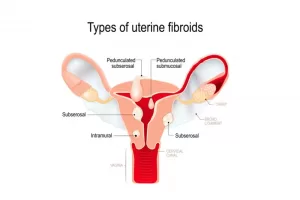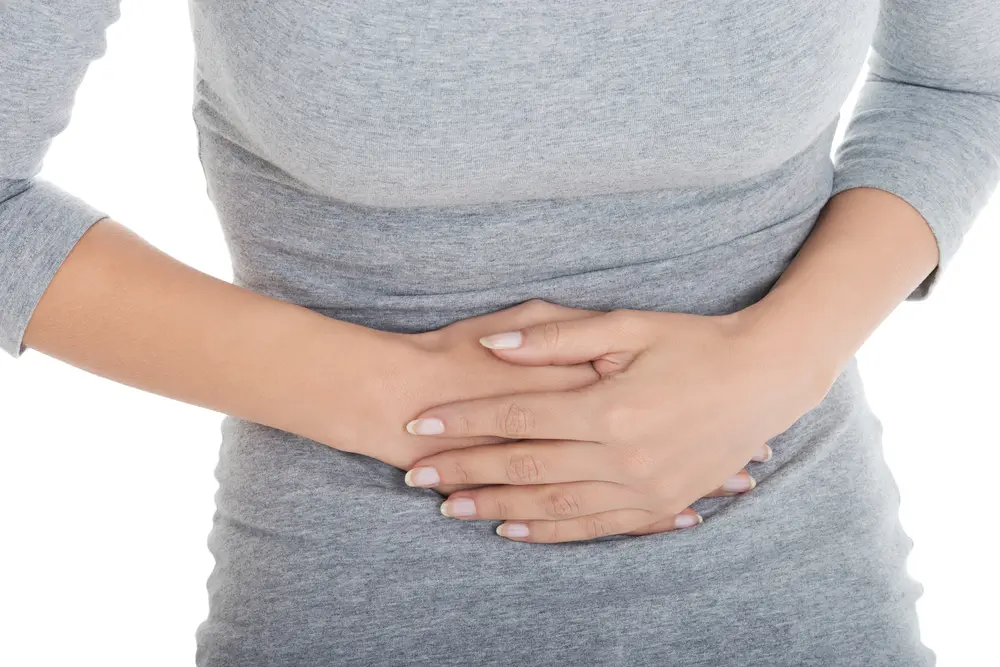Medically Reviewed by Dr Davinder Nagah
Last updated on 11.06.2024
What are fibroids?
- Fibroids are benign (non-cancerous) lumps that grow in the wall of the uterus (womb).
- They are sometimes called “myomas” or “leiomyomas”.
- They are very common- 70-80% of women over the age of 50 will have one or more fibroids but only about a quarter of these women will get any symptoms.
- Fibroids can range in size- they can be so small they are hard to see on a scan, or they can (rarely) grow so big that the uterus expands to the top of the abdomen (tummy).
Who gets fibroids?
- Fibroids form in women during their reproductive years, particularly over the age of 35. They tend to stop growing at menopause and often shrink at this stage.
- They tend to run in families- if your mother had fibroids, you may have a higher risk of getting them too.
- They’re more common in women who got their first period at a young age, or in women who have never been pregnant.
- Women of African descent get fibroids more often, and at a younger age. They are also more likely to develop multiple, larger fibroids.
- Obesity is also a risk factor for fibroids
What are the symptoms of fibroids?
Most women who have fibroids don’t get any symptoms. However, some women may experience the following symptoms of fibroids:
- Heavy periods
- Long periods
- Abnormal bleeding patterns, including bleeding between periods
- Pelvic pain or lower back pain
- Painful periods (dysmenorrhoea)
- Pain during sex (dyspareunia)
- Difficulty getting pregnant
- Miscarriage
- Premature labour
- Large fibroids may press on the bladder or bowel, leading to constipation or difficulty passing urine
- A mass or swelling in the tummy
- Urinary frequency
- Sudden severe pain can happen if a fibroid outgrows its blood supply and it begins to “die”
What causes fibroids?
It’s not entirely clear what causes fibroids. The sex hormones, oestrogen and progesterone seem to play a role- fibroids shrink during menopause, when the levels of these hormones drop.
What are the different types of fibroids?
Fibroids are described by their location in the uterus. They can be “submucosal” which means they are just under the lining inside the uterus. They can be “intramural”, which means they are in the muscle layer, or they can be “subserosal” which means they grow on the outside of the uterus. If a fibroid is “pedunculated” it means it is growing on a stalk, inside or outside the uterus.
Are fibroids serious?
No, not usually. They almost never become cancerous. Though, as mentioned above, they can lead to symptoms and complications.
How are fibroids diagnosed?
Your doctor may suspect you have fibroids based on your symptoms. The diagnosis is usually made by performing an ultrasound scan of the lower tummy. Sometimes other tests such as an MRI scan or hysteroscopy (camera test) may be needed. A blood test may show a low blood count or low iron, if periods have been heavy due to fibroids.
Are fibroids dangerous in pregnancy?
Most fibroids don’t cause any problems in pregnancy. However, large fibroids (particularly submucosal fibroids, i.e ones on the inside of the uterus) may cause issues, such as difficulty getting pregnant, miscarriage, premature labour, placental abruption and low birth weight.
What is the treatment for fibroids?
This depends on the size, number and location of the fibroids, the severity of symptoms, whether future pregnancies are hoped for, and how close a woman is to menopause.
Options include
- Monitoring- if fibroids are causing no issues, then they can just be observed
- Medications- certain hormonal medications, such as Gn-RH agonists or a progestin-releasing coil (IUD) may be used to try to reduce the size of fibroids. Other medications such as the contraceptive pill or certain anti-inflammatories can be used to make periods lighter, though they do not change the size of fibroids.
- MRI directed ultrasound- the fibroids are located by MRI and ultrasound waves are used to destroy the fibroid tissue
- Arterial embolization- a small tube is passed into the blood vessel that supplies the fibroid, and a substance is injected to create a blockage. Once the blood supply is blocked, the fibroid tissue dies and slowly reduces in size.
- Surgery- depending on size and location, fibroids can be removed surgically in different ways- by hysteroscopy (a camera is passed into the uterus via the vagina), laparoscopy (a camera is passed through the wall of the tummy) or hysterectomy (uterus is removed, future pregnancies are not possible).
If you have concerns about fibroids or think you have symptoms of fibroids, you should see your doctor.
Further patient resources
Article resources
Getting a Mental Health Care Plan in Australia: Your Guide
Getting a Mental Health Care Plan in Australia: Your Guide Mental health matters—and if you’re feeling overwhelmed, anxious, or down, a mental health care plan can help. But what is it, and how do [...]
UTI Symptoms and Treatment: What You Need to Know
UTI Symptoms and Treatment: What You Need to Know Urinary Tract Infections (UTIs) are common, uncomfortable, and often disruptive. But what exactly are the signs to watch for, and how can you get relief [...]
Free Mental Health Care Plan Online | Bulk-Billed by Qoctor
Free Mental Health Care Plan Online | Bulk-Billed by Qoctor Discover how to get a free, bulk-billed Mental Health Care Plan (MHCP) in Australia through Qoctor's telehealth service. Accessing [...]






